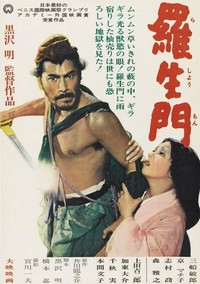
Rashômon (1950)
In the Woods / Rasho-Mon / 羅生門

Raiting: ![]() 8,3 /10
8,3 /10
Genre: Drama
Director: Akira Kurosawa
Stars: Toshirô Mifune, Machiko Kyô and Takashi Shimura
Country: Japan
Release date: 26 August 1950
Length: 88 minutes


Raiting: ![]() 8,3 /10
8,3 /10
Genre: Drama
Director: Akira Kurosawa
Stars: Toshirô Mifune, Machiko Kyô and Takashi Shimura
Country: Japan
Release date: 26 August 1950
Length: 88 minutes